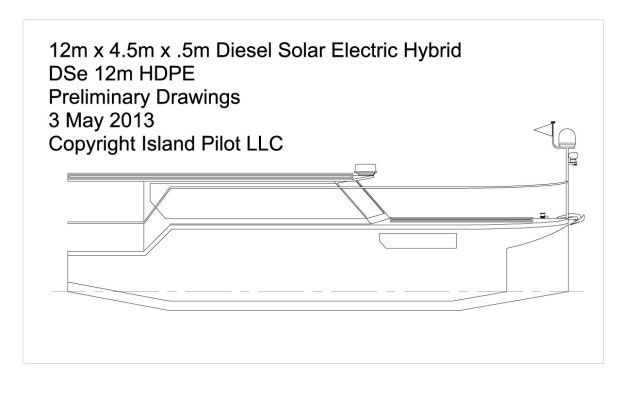rjtrane
Senior Member
- Joined
- Apr 8, 2013
- Messages
- 268
- Location
- USA
- Vessel Name
- Sunshine
- Vessel Make
- Island Pilot DSe 12m Hybrid
Bob,
I was actually hoping you would crunch numbers - I did a quick internet search - found out that 1 GPH in a diesel = 18 HP hours - since I was burning 1.2 GPH this becomes 21.6 HP hours. I was getting the same speed under the same conditions using 8.5 kW or 11.3 HP. Seems working backwards, there are inefficiencies in the internal combustion motor vs. the electric? The diesel burned twice the fuel than HP alone dictated for the same, 5 knot, performance. Obviously, there was the exact same amount of HP being delivered to the shaft, whether from diesel or electric.
I was actually hoping you would crunch numbers - I did a quick internet search - found out that 1 GPH in a diesel = 18 HP hours - since I was burning 1.2 GPH this becomes 21.6 HP hours. I was getting the same speed under the same conditions using 8.5 kW or 11.3 HP. Seems working backwards, there are inefficiencies in the internal combustion motor vs. the electric? The diesel burned twice the fuel than HP alone dictated for the same, 5 knot, performance. Obviously, there was the exact same amount of HP being delivered to the shaft, whether from diesel or electric.




